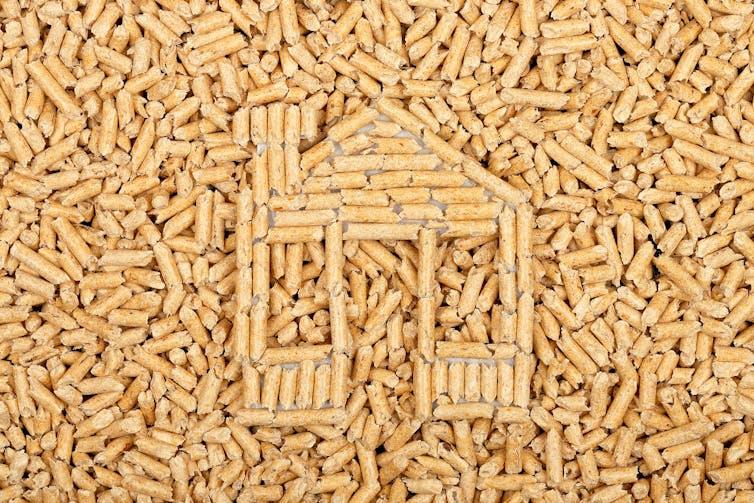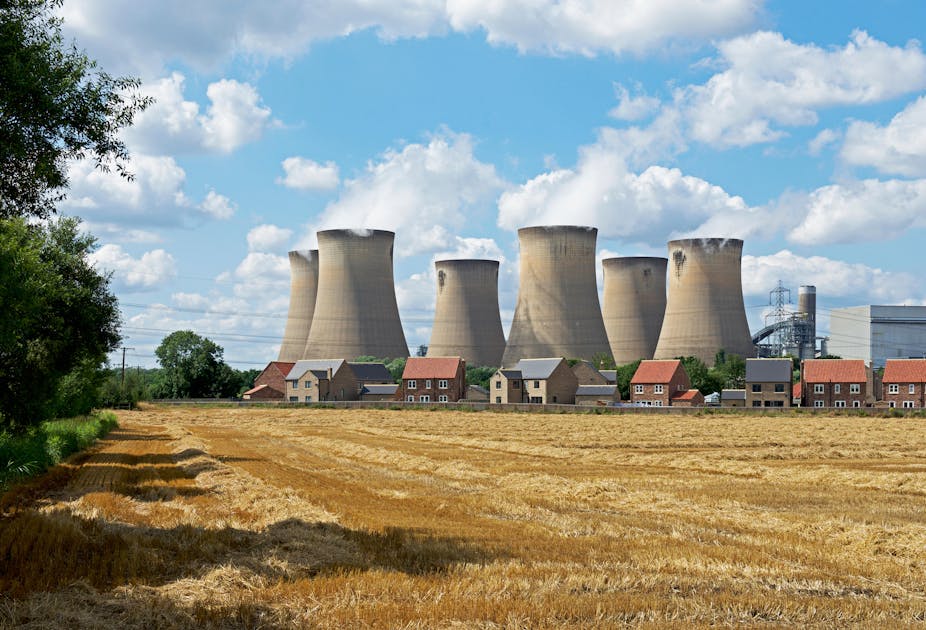The UK government is counting on the carbon capture technologies that bioenergy power plants are trialling to meet its climate change goals. Last week the UK’s largest renewable energy power plant, Drax, announced plans for pioneering trials of a new capture technology at its North Yorkshire power station.
Overall, the UK spends hundreds of millions of pounds every year on the wood-burning power stations this technology would supposedly remove the emissions of. But can it deliver the kind of reduction in carbon output the country and the world needs?
To answer this question, first it’s important to understand what scientists mean by the term “negative emissions” – especially if you want to decipher climate change news for yourself.
Imagine that household waste collectors go on strike for a month, during which huge amounts of rubbish accumulate. Upon returning to work, the collectors working their usual shifts aren’t able to clear the backlog, so the council hires extra workers.
For a period after the strike, the amount of household waste produced is therefore less than the total rubbish being collected. The net production of waste is negative – even if, for a period, there is still rubbish in the streets.
The rubbish in this example represents greenhouse gas (GHG) emissions, and what a regime of negative emissions could look like. In the last few decades, however, the worldwide levels of GHG produced remained high and very little was removed.
Attempts to supplement nature’s processes for removing carbon have largely proved unsuccessful. For example, the US government invested billions of dollars in technology to capture carbon released from coal power plants, but most of these carbon capture units were never built – largely because the technology was so expensive.
Mostly, we still rely on natural habitats such as woodlands, mangroves and peatland to remove carbon from the atmosphere. But UK salt marshes could disappear under rising sea levels, huge swathes of the world’s mangrove forests have been cleared for shrimp farms, and we are losing forests to timber logging and wildfires at an alarming rate.
If we put in place all the potential technologies for removing GHG emissions so that we remove more than we produce (we hire more rubbish collection workers), we would instead be in a regime of negative emissions. So how feasible is this?
What is BECCS?
Biomass or bioenergy is the UK’s second-largest source of renewable energy after wind power. Bioenergy is generated by burning matter, mostly wood pellets.
Bioenergy with carbon capture and storage (BECCS) aims to capture the carbon released from burning wood pellets and crops, and store the carbon deep below the ground. This technology is considered carbon negative because it effectively removes carbon from the atmosphere. A BECCS pilot project at Drax captured carbon in 2019, and the power station aims to have carbon capture technology fully operational in 2027.
So far so good. BECCS advocates say it will be key in the fight against climate change. However, life is never easy as it first looks.
For a start, BECCS only accounts for carbon released when the wood is burned. In reality, carbon is generated throughout the process chain: planting trees, harvesting them, turning the wood into pellets, shipping the pellets.
Conservative estimates show making wood pellets and shipping them accounts for about a quarter of the carbon released in this process. And carbon capture and storage is itself a highly energy-intensive process.
To return to our earlier example, overlooking these carbon emissions would be like the council failing to factor in the time workers need to maintain rubbish collection trucks and separate different recycling materials.

What’s more, burning wood can produce more CO₂ emissions than fossil fuels. Providing a precise account of the emissions from burning wood is not an easy task as there are so many variables. And calculations tend to assume a steady process. A correct analysis should factor in things like rotation time to replace and manage the harvested forest.
Given that burning a unit of wood generates considerably less heat compared with burning a unit of oil or coal, wood for bioenergy can actually produce more net CO₂. Yet the government is relying on BECCS for its net zero strategy.
So how useful is this technology?
The UK is the largest importer of bioenergy in the world, bringing in more than 9 million tonnes of wood pellets in 2020. Burning around 7 million tonnes of wood pellets is equivalent to burning 25 million trees.
In 2020, the UK government pledged to spend £13 billion to support wood-burning power stations, including £10 billion at the Drax power station. Energy thinktank Ember estimates that biomass generators are getting carbon tax breaks of £333 million a year in addition to the direct subsidy.
Yet the latest UN Intergovernmental Panel for Climate Change report is lukewarm about BECCS. It states: “The use of bioenergy can lead to either increased or reduced emissions, depending on the scale of deployment, conversion technology, fuel displaced, and how and where the biomass is produced.” Overall, the report leaves us in the dark about how useful BECCS can be.
The scale of the issue
Harnessing plants’ ability to remove CO₂ by photosynthesis is the best carbon capture technology in the world. It takes weeks to cut down, ship and burn a tree, but decades to grow one. Younger trees suck far less CO₂ from the atmosphere than an older tree. If we want to rely on BECCS to cut our carbon emissions, we need to plant more trees at a faster rate.
Huge amounts of land will be needed for this bioenergy. Wildlife is already at risk by timber harvesting for woodchips in protected forests. Harmful practices such as logging in sensitive and protected forest habitats, home to threatened and rare wildlife, are widespread in the UK biomass supply chain.
In short, there are still many uncertainties around BECCS – and some proper maths to be done about its benefits.

